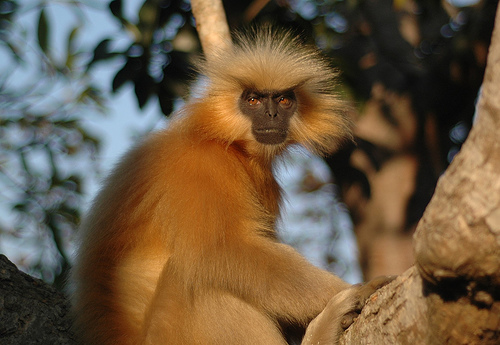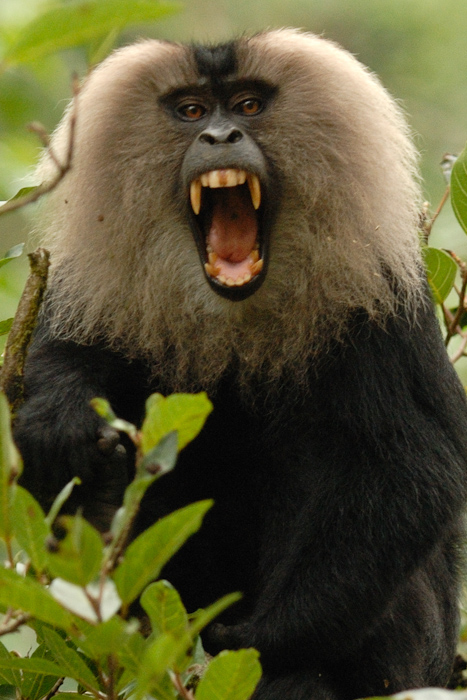While big cat conservation steals most of the attention in India, many other species are racing toward extinction, with little action taken to protect them. The primates of India are one such often ignored group, with more than half of the 23 species found in the country having a ‘threatened’ status on the IUCN Red List. Habitat loss, fragmentation, and degradation remain the biggest threats to these primates of India, while hunting and live capture also add to their woes. However, the nature and intensity of threats differ across the country’s various regions.
Primates Of The Northeast
Primates face the most severe threats in northeastern India, although it is also the region with the greatest primate diversity. It is part of the Indo-Burma biodiversity hotspot, featuring remarkable biodiversity. At least nine primate species inhabit this region, including the hoolock gibbon, capped langur, golden langur, Phayre’s leaf monkey, Assamese macaque, Bengal slow loris, rhesus macaque, stump-tailed macaque, and the northern pig-tailed macaque. Sadly, however, very little research and conservation work have been conducted on these primates of northeastern India, with even baseline population data lacking for several of these species.
The unstable socio- political situation in some northeastern states and the difficult terrain often make this region one of the least favorite among wildlife researchers. Also, the inclusion of bushmeat in the diet of several communities in the region further aggravates the issue. Above all, habitat loss is the biggest threat to the primates of the northeast. Forests are cleared for agriculture and human settlement expansion and for timber, firewood, and forest product collection.

Among the primates in the region, the hoolock gibbon receives some conservation attention, given that it is a highly threatened species. These gibbons are also usually not hunted for food and can survive in fragmented patches of forests. However, the macaques of the northeast bear the brunt of issues. They are losing both forests and lives to hunting pressures. Such hunting, although illegal in India, continues unabated in the remote areas of the northeast, often completely exterminating primate populations from such places. Primates are also killed when considered a threat to the local economy, like those damaging crops. The rhesus macaque suffers the most from this threat.
Primates In The Western Ghats
In the Western Ghats, the endangered lion-tailed macaques and other primates also face a range of threats, especially habitat degradation. With their rainforest habitats being highly fragmented due to human activities, the lion-tailed macaques are now forced to forage near human settlements on human-origin food and alter their natural behavior and dietary patterns to adapt to the new norms. Another threatened primate in the Western Ghats, the ‘Vulnerable’ Nilgiri langur, is also running towards extinction. Habitat fragmentation and poaching are its biggest threats. The species is killed for its body parts for the traditional medicine trade, whose market exists both within and outside India.

The Kashmir Gray Langur
Moving on to another part of the country, Jammu and Kashmir, where one can find, or hope to find, the elusive Kashmir gray langur, an endangered species. Like many other animals and plants of the region, this primate faces a multitude of threats, with habitat degradation and loss and conflict with humans being the major concerns in its conservation. Today, this species is confined to small patches of degraded forests in the state, with Dachigam National Park being one of its last remaining bastions.
The Threatened Primate Of Nicobar
Primates are also not spared in the remote Nicobar islands in the Bay of Bengal. The Nicobar long-tailed macaque found here is not doing too well. The growing human populations in these islands have brought them in close contact with humans, making them susceptible to persecution as they are considered a threat to crops grown on the islands. Habitat destruction and hunting pressures further decimate their numbers.
Thus, primates are threatened across India. In many places of their residence, these primates do not share habitat with big cats or other megafauna that steal all the conservation spotlight in the country. Hence, such species hardly benefit from the conservation programs aimed at charismatic species and remain largely ignored. Hence, it is time to focus more on protecting India’s primates before it is too late to save them and the ecosystems they inhabit.
Written by: Dr. Oyishimaya Sen Nag
Help us help them! Think Wildlife Foundation is a non profit organization with various conservation initiatives. Our most prominent campaign is our Caring for Pari intiative. Pari is a rehabilitated elephant at the Wildlife SoS Hospital. 25% of the profits from our store are donated to the elephant hospital for Pari. Other than buying our wonderful merchandise, you could donate directly to our Caring For Pari fundraiser.
References
https://india.wcs.org/Newsroom/Blog/ID/13650/Imperiled-primates-of-northeast-India file:///Users/user/Downloads/0898-6207.20.1.107%20(3).pdf
https://www.conservationindia.org/gallery/kashmir-grey-langur-dachigam-national-park-jammu- kashmir
https://www.thenewsminute.com/article/habitat-loss-and-poaching-threaten-survival-elusive- nilgiri-langur-104175
https://www.thehindu.com/news/cities/Coimbatore/habitat-loss-puts-lion-tailed-macaque-in- iucn-endangered-list-for-the-sixth-time/article32698840.ece
